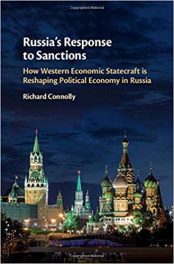 Editors: E.I. Khouri and Jens E. Olesen
Editors: E.I. Khouri and Jens E. Olesen
Publisher: Cambridge University Press – 1,152 pages
Book Review by: Sonu Chandiram
This second volume in the series on Scandinavia was published in July 2016. The first volume was published in 2003. It was entitled The Cambridge History of Scandinavia – Volume I – From Prehistory to 1520. I urge readers to obtain a copy of that volume as well, in order to get a better ‘picture’ of the current characteristics and history of that region of Europe: the Nordic states. A third volume is planned, but its publication date is yet unknown.
The Nordic states include Denmark, Finland, Iceland, Greenland, Norway, and Sweden. They share a common geographic, historic and socio-cultural distinctness that differs from the rest of Europe. This common distinctness provides the rationale for compiling a comprehensive and comparative history of Scandinavia.
One of those distinctions is the relative prosperity and higher incomes of people in Scandinavia compared to the rest of the world. According to 2018 World Bank numbers, the average per-year nominal Gross Domestic Product (GDP) were the following, by world rank: No.3 Norway – $81,807; No.5 Iceland – $73,791; No.9 Denmark – $60,596, No.11 Sweden – $54,112; and No.14 Finland – $49,960. Figures are not available for Greenland. Aerage for the five nations: over $64,000. This is many multiples of the world average GDP of $11,368, and many times the lowest national GDP of $307 (South Sudan). For Norway, it is 266 times.
This book covers a quarter of a millennium-long history of Scandinavia from the close of the Middle Ages in 1520 to formation of nation states in 1870. This is a very lengthy period, indeed, as is the length of this volume: 1,152 pages.
The immense work of organizing and producing this volume was shared by 37 specialists on Scandinavian history, including two editors, residing in the above-mentioned Nordic states, as well as in Germany and the United Kingdom. To provide you an overview of the subjects covered and the topics discussed in this volume, we list below its 9 parts and 50 chapters:
Introduction
- Part I – Reformation and Reorganization, 1520-1600
- The disintegration of the medieval church
- Social, political, and religious tensions
- The Reformation in Denmark, Norway, and Iceland
- The Reformation in Sweden and Finland
- Intellectual currents
- The crown and the aristocracy in co-operation in Denmark and Sweden (the ‘aristocratic regime’)
- Part II – Material Expansion and Its Limitation
- Growth and stagnation of population and settlement
- Economic growth and trade
- Social consequences
- Part III – The Scandinavian Power States
- The internationalization of the Baltic market
- The Dutch and the English in the Baltic, the North Sea and the Arctic
- The struggle for supremacy in the Baltic between Denmark and Sweden, 1563-1721
- Militarization of Scandinavia, 1520-1870
- Colonial empires
- The military imperative
- Fiscal and military developments
- From aristocratic regime to absolutism, 1660-82
- The consolidation of the Nordic states: the Europeanization of Scandinavia
- Center and periphery
- Religious and social regimentation
- Part IV – Society in the Eighteenth Century
- Democracy and family, c.1650-1815
- Economy and social conditions
- Material and popular culture
- The situation of the commoners, 1650-1750
- Religious and intellectual currents
- Cultural Europeanization, court culture and aristocratic taste, c. 1580-1750
- Architecture, literature and the arts
- Music and the Danish and Swedish courts in the sixteenth and seventeenth centuries
- Music in Scandinavia in the eighteenth century
- Part V – Political Structures and Foreign Policy
- Constitution and politics
- Denmark in the Napoleonic wars, 1807-14
- Part VI – The New Economic Order
- Scandinavia between the Congress of Vienna and the Paris Commune
- The demographic transition during the period 1815-70: mortality decline and population growth
- Agricultural development in Scandinavia, c. 1800-50#
- Industrial expansion
- Part VII – The New Social Order
- New social categories in town and country
- Social reactions at different levels
- The beginning of the Great Emigration
- Everyday life
- The education of new groups in society
- Arts and architecture
- Literature
- Part VIII – The New Political Order
- The constitutional situation
- The idea of Scandinavianism
- Finland: the emergence of the nation state
- Denmark: the emergence of the nation state
- Norway: the emergence of the nation state
- Sweden: the emergence of the nation state
- Iceland: the emergence of the nation state
- Part IX – Conclusion
- From the Reformation to the formation of nation states and civic societies, 1520-1870
This is an excellent volume on the 250-year history of Scandinavia from 1520 to 1870.
Editors:
E.I. Khouri is Professor Emeritus of General History at the University of Helsinki in Finland
Jens E. Olesen is Professor of Nordic history at the University of Greifswald in Germany.







